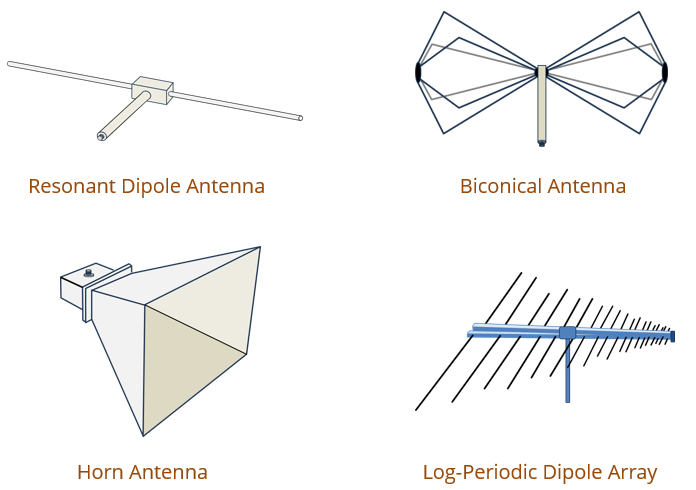EMC Question of the Week: January 20, 2025

Which of the following antennas is generally the most practical for making radiated emissions measurements in a semi-anechoic environment between 10 and 100 MHz?
- resonant dipole
- biconical
- log-periodic dipole array
- horn
Answer
The best answer is “b.” Biconical antennas are not particularly efficient, and their frequency response is not particularly flat without compensation. Nevertheless, unlike the other options listed here, their maximum dimension can be considerably less than one-half wavelength. EMC radiated emissions standards typically start at a frequency of 30 MHz or lower. At 30 MHz, a quarter wavelength in free space is 2.5 meters. Resonant dipoles, log-periodic dipole arrays, and horn antennas designed to work at 30 MHz, would have to be huge. With these antennas, it would not be possible to make good measurements of vertically polarized fields at a height of only 1 meter above the test environment floor.
It's interesting to note that the antennas specified in the first unintentional radiated emissions requirements issued by the FCC (U.S. only) in the 1980s were resonant dipoles. Below 80 MHz, the lower arms of the dipole had to be shortened in order to make measurements in the vertical polarization. This procedure for doing this was well-defined but tedious, and there was poor correlation in the measured results between different test sites.
Have a comment or question regarding this solution? We'd like to hear from you. Email us at
